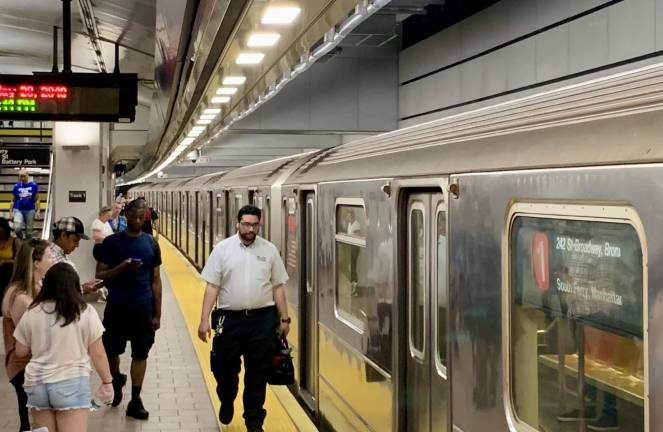MTA Plans to Hike Subway and Bus Fares to $3 on Jan. 1
MTA confirmed plans for 2026 fare and toll increases, drawing criticism from Mayor Adams and commuters already facing rising costs.

The MTA pulled back the curtain on its long-discussed rate hikes on July 30 and revealed that it will seek to boost subway and bus fares to $3 starting on Jan. 1.
To officially take effect, the MTA board must vote on the fare increase between now and the end of the year, but it is usually a rubber stamp.
The fare increase drew an immediate rebuke from Mayor Eric Adams.“Proposing a fare hike without demonstrating meaningful improvements is offensive to hard-working New Yorkers.” He went on to urge MTA board members to vote “no” when the vote comes up before them.
The fare and toll increase, part of the 2025 MTA financial plan, voted for by the board in December of 2024, was supposed to have taken effect in March but it was postponed. Congestion tolling, which started in January of this year, is expected to raise $500 million so far this year, but fare evasion this year is estimated to cost the MTA $700 million. At this point, NYC Transit fare revenues contribute 40 percent of its operating costs; Metro North’s are 55 percent, and the LIRR’s is 48 percent.
After the proposed 10-percent hike in transit fares, the MTA is already proposing another increase scheduled for 2027, which is expected to be about a 4-percent hike. Express Bus fares will go up a quarter to $7.25 per trip, with a seven-day fare cap of $67 using all MTA NY Transit options.
But wait! There’s more!
If you now purchase an unlimited monthly or weekly pass on subways and buses, that option will be gone.
When the MetroCard yields its last fare, a new reusable OMNY card, currently $1, will double in price. The cheapest option will be to use the seven-day rolling fare cap, which translates to paying a $36 fare for a week, with unlimited rides (which starts after 12 rides in a weekly period). The current 30-day option, $132 for unlimited rides, will disappear, as will the $34 weekly pass. Cash and coins would continue to be accepted at card-vending machines in subway stations, not on buses or express buses.
For E-ZPass users, your tolling will increase 20 to 65 cents per crossing.
Are you an LIRR or Metro-North rider? Most fares, with the exception of CityTickets, will increase by 4.4 percent. Do you buy a one-way ticket or a monthly rail ticket online? 2026 will see immediate online ticket activation to be used within four hours of purchase, regardless of whether the train staff sees them or not. Alternatively, paper tickets will still be sold for rail commuters, but they would also expire four hours after purchase.
All reduced-fare programs will continue in effect, based on the higher fares.
During the press briefing, held after the conclusion of the July 30 board meeting, a reporter asked about the need for a fare increase on top of congestion tolling.
CEO and Chair Janno Lieber replied, “It’s not an affordability issue. Since 2018, transit has gone up 16 percent and housing has gone up 68 percent. Transit is what keeps this city moving.”
Congestion tolling . . . is expected to raise $500 million so far this year, but fare evasion this year is estimated to cost the MTA $700 million.